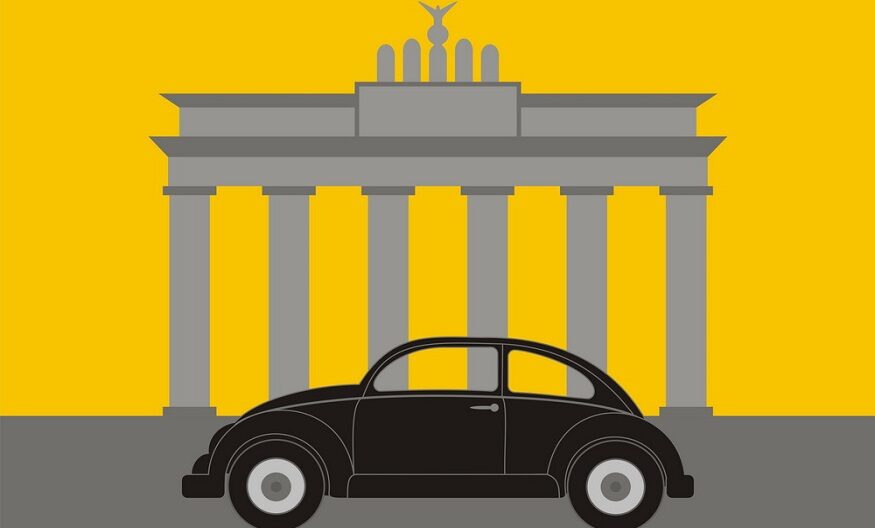
Some cars are like fine wine. The older they get, the better they get. Then there are those cars that are more like the cheap wine you buy at the grocery store. They do not age well at all. Such is the reality of the automotive world. It’s too bad becausethere are some really great cars from days gone by. For some unknown reason, designers got hold of them and ruined everything.
CarFastCash is a Southern California company that pays cash for cars in Kern, San Bernardino, Los Angeles, Ventura, and San Diego counties. Pretty much anyone looking to sell a car in Southern California can sell it to them. At any rate, the CarFastCash team has seen it all. They offer the following four automotive classics that didn’t age well:
1. The Volkswagen Beetle
Every now and again, a car company comes up with on an iconic design unmatched by anything else. That is exactly what Volkswagen did when it introduced the Beetle in 1938. To be sure, the Beetle didn’t become a commercial success until the late 1940s. Its designers also took the idea of economy to new heights with this car. But there was something special about it.
The Beetle offered a number of things that made it unique. For starters, it had no transmission in the sense we understand transmissions now. The engine was mounted in the rear of the vehicle and connected to the rear axle with a very short transmission. Meanwhile, empty space at the front of the vehicle was utilized as trunk space.
Things began to fall apart for the Beetle when Volkswagen introduced the four-door model. Things got worse when someone decided that a convertible version was a good idea. However, the final nail in the Beatle’s coffin was the introduction of the New Beetle released in 1998. It featured a sleeker design as well as a front-mounted engine and rear trunk space. Making the motor-trunk switch forever ruined the iconic German car.
2. The Ford Mustang
Pony car enthusiasts will probably be upset by this, but the Ford Mustang did not age very well either. The Mustang was an iconic car from the day was first rolled out in 1964. It set the stage for the pony car battle between Ford, GM, and Chrysler. It is a battle that Ford has consistently won, by the way.
The original Mustang was a sight to behold. In fact, there was nothing quite like it. The Chevy Camaro and Pontiac Firebird could never compete for die-hard Mustang fans, and the Dodge Challenger wasn’t even close. So what happened? The oil crisis showed up.
The Mustang’s third generation had the unfortunate luck of being developed at just about the same time the world was facing an oil shortage. Ford made the decision to scale the car down and lighten it up. What they eventually settled on looked nothing like the rough-and-tumble Mustangs of old. It looked like just another hatchback made with cheap materials.
Third- and fourth-generation Mustangs were a commercial failure. No one wanted them. Fifth-generation Mustangs, produced between 2005 and 2014 fared better, thanks to Ford trying to recapture some of the mystique of older designs. But it wasn’t until 2015 that the sixth generation of this classic muscle car finally reclaimed its place in the pony car market.
3. The Pontiac Firebird
Pontiac’s first answer to the Ford Mustang was the Firebird. It was also a pony car designed solely to compete against the Mustang. It was first released in 1967 and produced continuously until 2002. One of the most well-known versions of the Firebird was the Pontiac Trans Am.
The original 1967 Firebird actually looked like a muscle car. In fact, it shared a lot of design features with the Camaro. But by the time the second-generation Firebird was released, designers had abandoned the Coke bottle look in favor of a sleeker, more rounded body style. The Firebird’s demise was already underway.
Modifications to the 1974 model put the car back on the right track, so much so that it was chosen as the main character’s vehicle in the TV series The Rockford Files. But that all came to a crashing end when Pontiac introduced wraparound rear windows for the 1975 model.
Pontiac held its own with the Firebird until the third generation debuted in 1982. By then, they had fallen into the same trap as Ford. Third-generation Firebirds looked more like cheap economy cars than muscle cars. But rather than attempt to fix the mistake like Ford did with the Mustang, Pontiac only made things worse with the fourth generation released in 1993. Suffice it to say that the Firebird was no longer a muscle car at that point.
4. The Dodge Aries
The Chrysler Corporation was in danger of utter collapse when they introduced the K platform of economy cars in the early 1980s. The flagship of that platform was the Dodge Aries. Believe it or not, Chrysler’s ‘K cars’ turned out to be the company’s salvation. The Aries went on to be named Car of the Year in its very first year production, which was 1981.
Unfortunately, Chrysler never managed to improve the car in eight years of production. The 1989 models were virtually identical to the ones manufactured in 1981. Only a few slight aesthetic changes were implemented during those years.
A lack of updates meant the Aries was doomed to a limited shelf life. If a car doesn’t change with the times, it will be left behind. That is exactly what happened with the entire K car line.
CarFastCash does not see a lot of these older cars in Southern California. That is not surprising. Cars that do not age well don’t tend to stick around too long. Neither average consumers nor collectors really want them, so they eventually end up sitting in scrapyards where they can be cannibalized for parts. It is all part of the automotive cycle of life.
